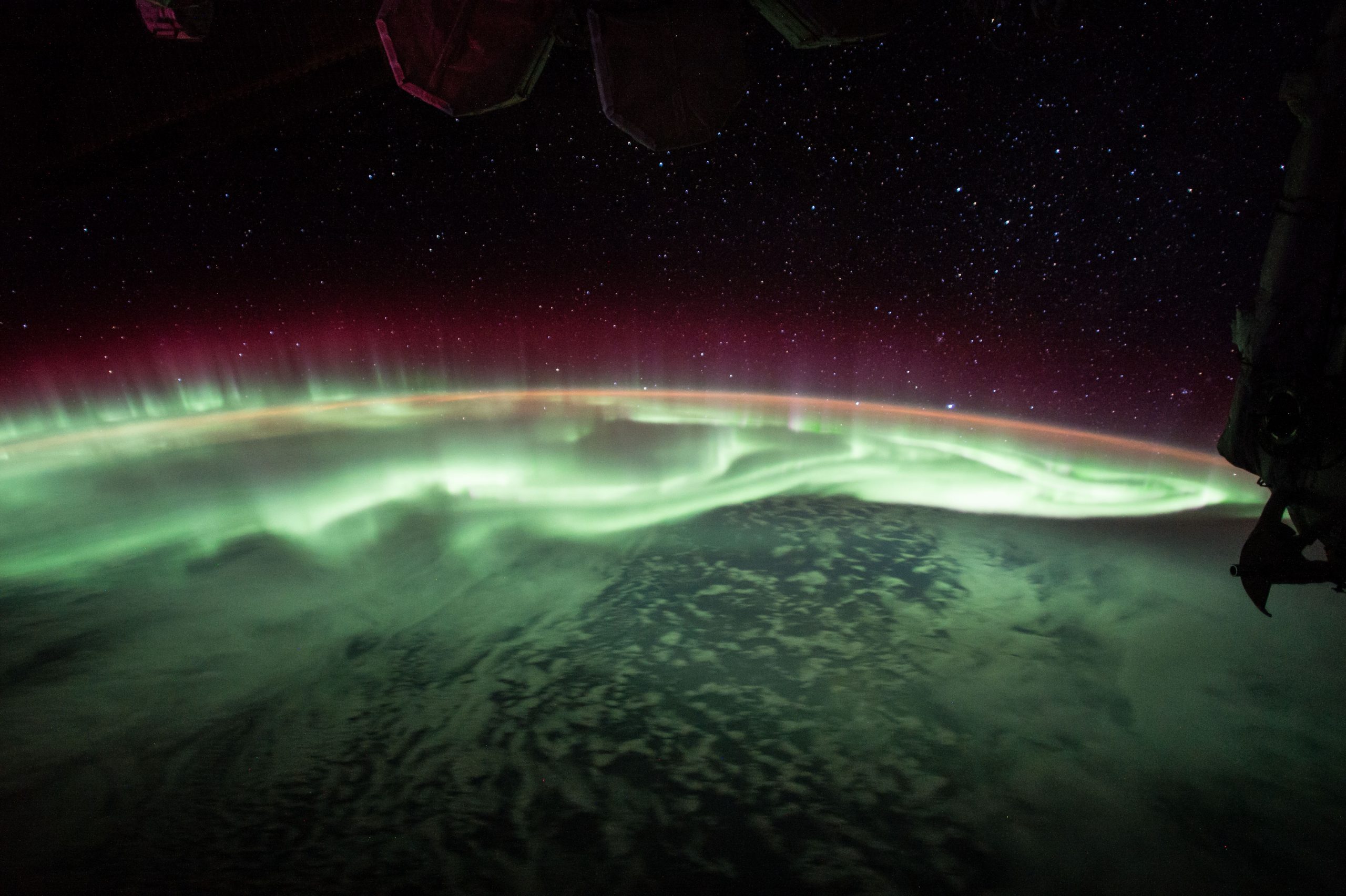2020 January 4
Aurora Slathers Up the Sky
Image Credit: Jack Fischer, Expedition 52, NASA
Explanation: Like salsa verde on your favorite burrito, a green aurora slathers up the sky in this 2017 June 25 snapshot from the International Space Station. About 400 kilometers (250 miles) above Earth, the orbiting station is itself within the upper realm of the auroral displays. Aurorae have the signature colors of excited molecules and atoms at the low densities found at extreme altitudes. Emission from atomic oxygen dominates this view. The tantalizing glow is green at lower altitudes, but rarer reddish bands extend above the space station’s horizon. The orbital scene was captured while passing over a point south and east of Australia, with stars above the horizon at the right belonging to the constellation Canis Major, Orion’s big dog. Sirius, alpha star of Canis Major, is the brightest star near the Earth’s limb.
满天的极光
影像提供: Jack Fischer , Expedition 52 , NASA
说明: 在2017年6月25日摄于国际太空站的这幅影像里,酷似洒在墨西哥卷饼上的青酱,泛绿的极光也涂满了天空。位在地球轨道上,高约400公里的国际太空站,正好在极光国度的上缘。极光的色泽,来自极稀薄高层大气中的受激分子和原子。例如在这幅影像里,最主要的辐射来自原子氧的辐射。在这幅迷人的影像里,较底层的是泛绿的辉光,而较罕见的泛红极光,一直绵延到太空站的地平线之上。这张轨道影像的拍摄点,在澳洲的东南角上方。其中,地平线上方有大犬座(猎户的大猎犬)的群星,而大犬座最亮的天狼星,则是地球临边最明亮的那颗星。







